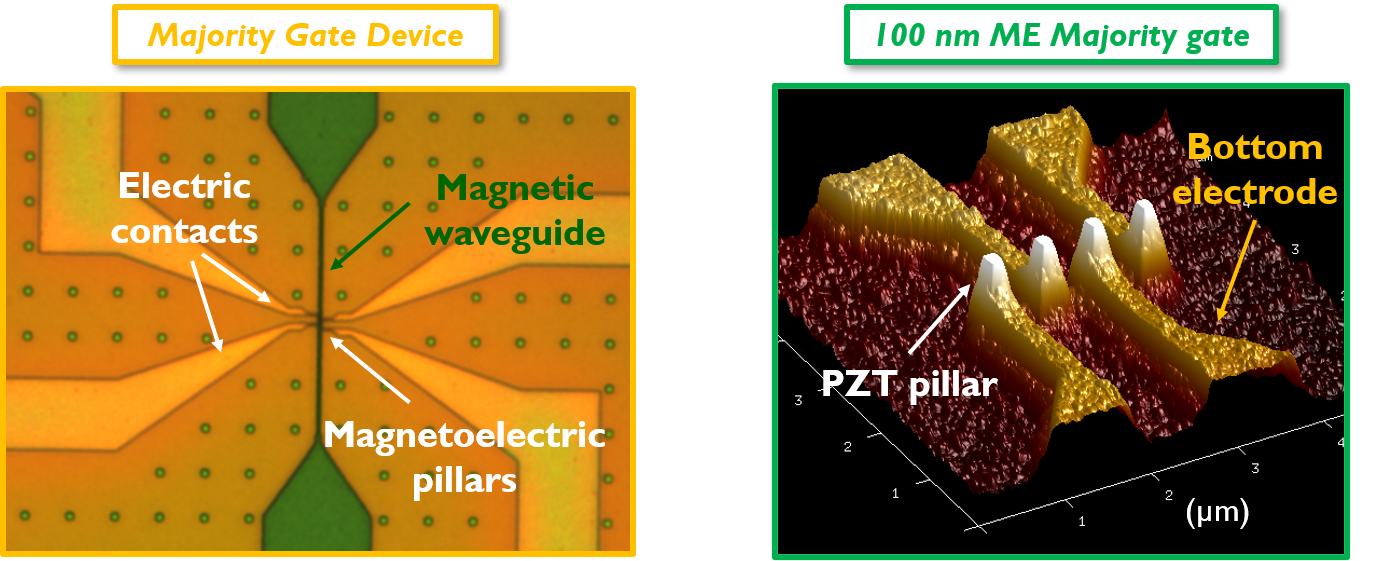 |
||
| Spin waves are particularly suited for the realization of compact interference-based majority gates, called Spin-Wave Majority Gate (SWMG). The basic structure is the inline SWMG, in which binary logic signals are encoded in the phases of the individual spin waves using phases of 0 and π as logic 0 and 1, respectively. Constructive or destructive interference leads then to an output wave with a phase that corresponds to the majority of the individual spin-wave phases. The amplitude of the output wave contains further information whether weak or strong majority is obtained. |  |
|
| SWMG with electrical transducers |
 |
Our implementation will be based on Co40Fe40B20 and permalloy waveguides with widths down to 850 nm. Micromagnetic simulations for 850-nm-wide Co40Fe40B20 waveguides in the Damon-Eshbach geometry show the excitation of spin waves confined in the center of the waveguide. |
|
|
|
|
Animations of the experimental magnetization dynamics in a SWMG with a 2.0 μm wide permalloy waveguide, imaged by time-resolved scanning transmission x-ray microscopy for different combinations of input phases: (π; π; π); (0; 0; π); (0; π; 0). The input phase combinations are indicated in the animations (details: Talmelli et al, Sci. Adv. 6(51), eabb4042 (2020)).
|
|
|
|
|
|
|
Animations of the magnetization dynamics in a SWMG with an 850 nm wide Co40Fe40B20 waveguide calculated by micromagnetic simulations for different combinations of input phases: (0; 0; 0); (π; 0; π). The input phase combinations are indicated in the animations. The complementary combinations (π; π; π) and (0; π; 0) can be obtained by shifting the time by half of a period.
|
||
| Top | |
